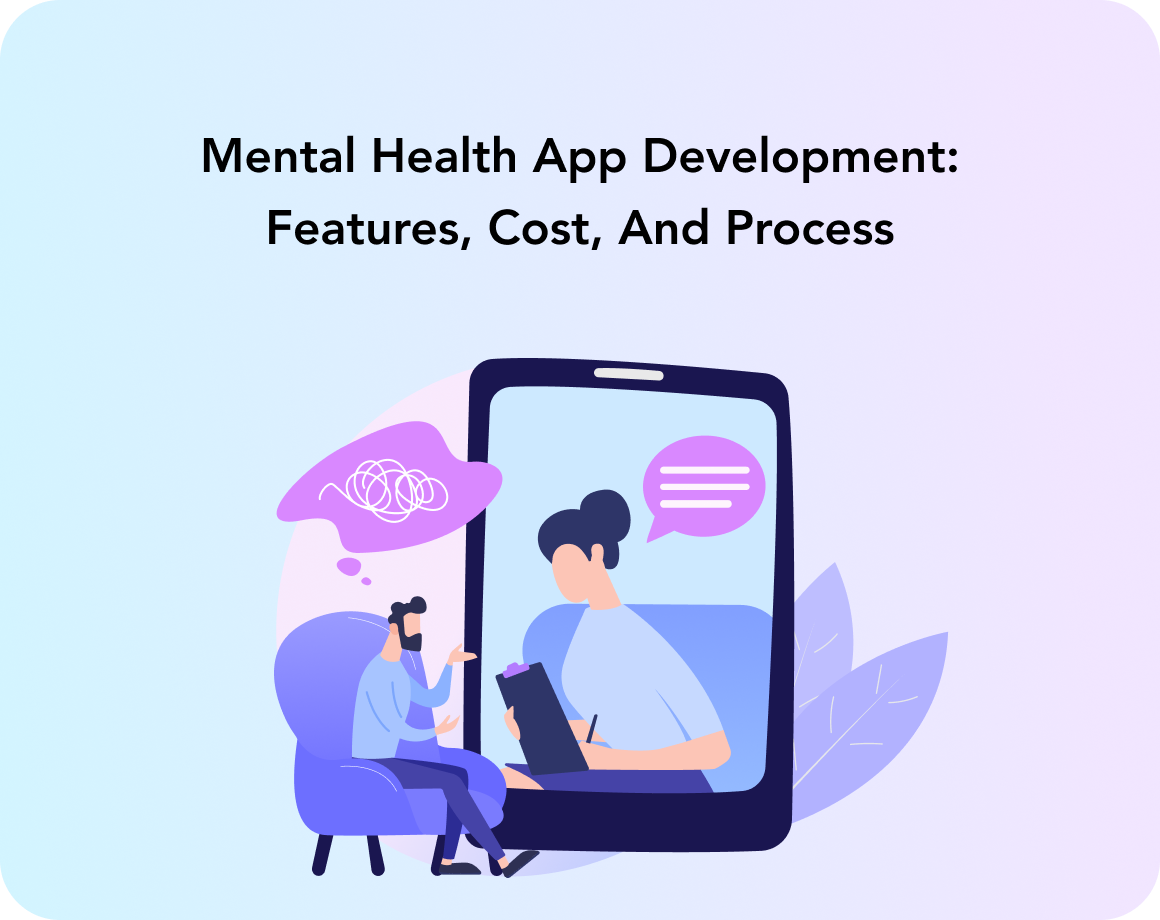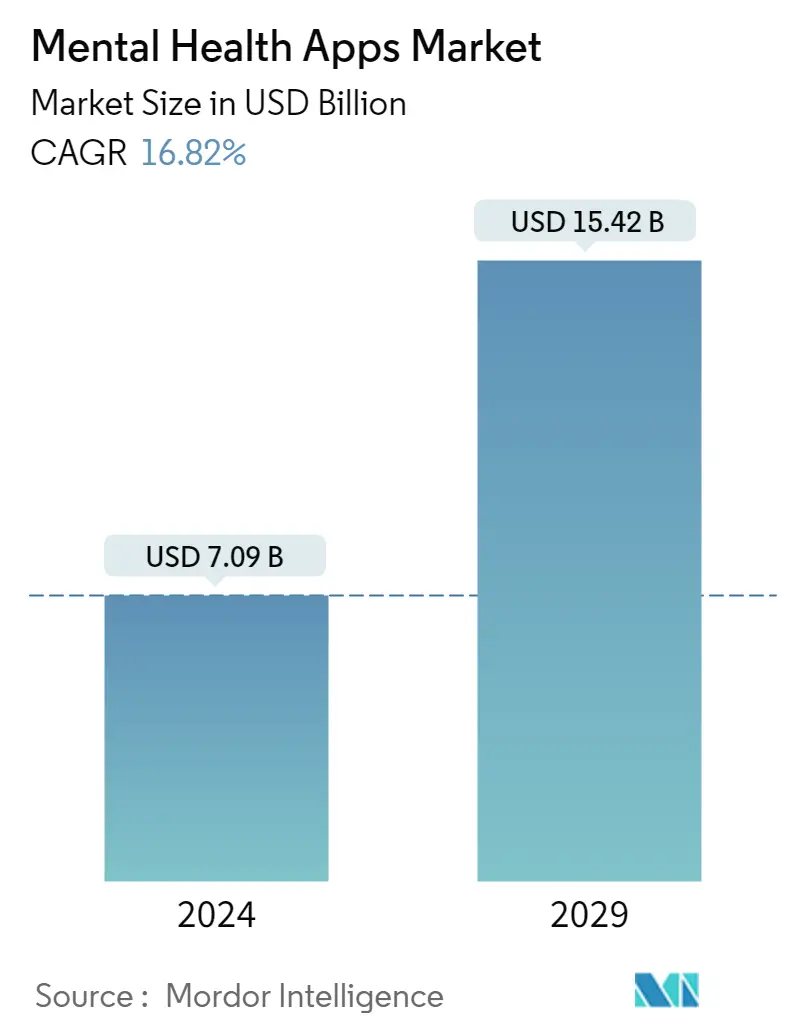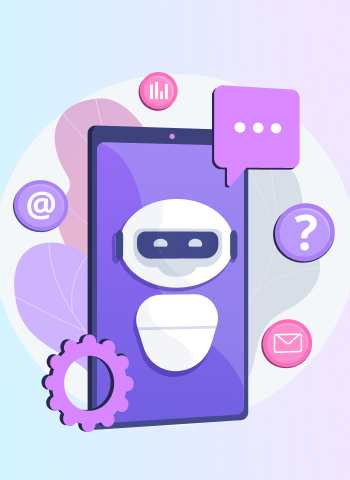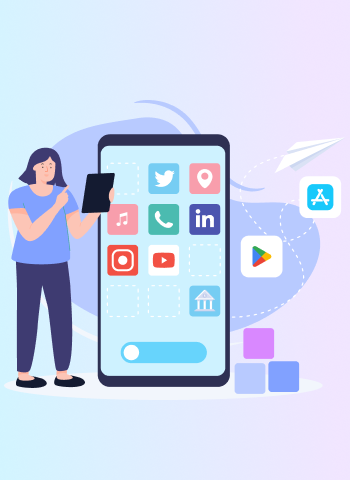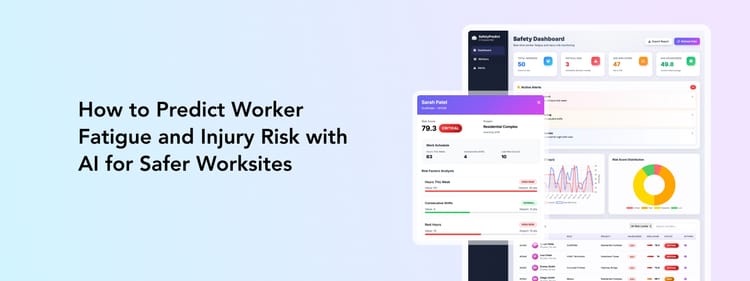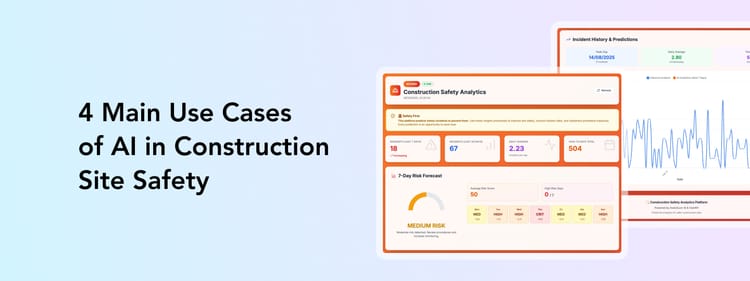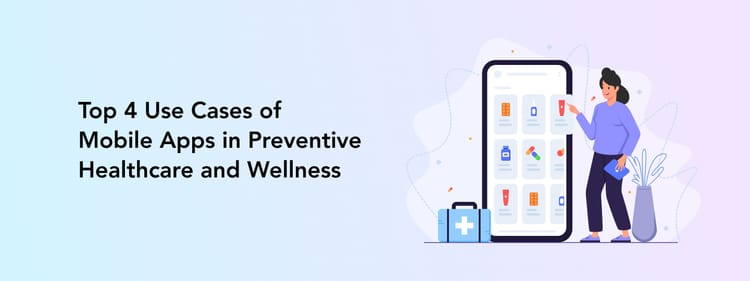While the world has come to the understanding that disregarding mental health is not an option, psychological help, such as therapy, remains inaccessible for many people. High therapy costs, insurance limitations, the absence of psychological professionals nearby, and the lack of resources to commit to long-term treatment call for an immediately available, affordable solution.
Mental health apps have become a way out for many. Breathing exercises and meditations help relieve negative emotions here and now, while mood tracking and teletherapy applications work on longer-term results.
This article describes the main mental health app types, useful features to include in a mental health app, the process of developing such a solution, and the possible cost of a custom-made mental health app.
Main Types of Mental Health Apps
Since the Covid-19 pandemic hit, Australia has seen a 50% increase in online mental health services use by young people. The same went for other countries: in March 2021, 10 out of 16 most downloaded apps were meditation tools.
This tendency lives now, too — seeing the convenience and accessibility of mental health apps motivated many users to stick to them as a daily wellbeing support.
Let’s explore the most common mental health app types.
Meditation and breathing apps
Meditation and breathing exercise applications are the most popular mental health digital products. Applications like Headspace or Calm offer users a variety of audio recordings with guided meditations and other mindfulness practices.
The meditations are usually divided into categories according to a request a user might have at the moment, like relieving anxiety, relaxing, focusing, preparing for a day, and so on. Plus, such apps usually have additional reading resources, relaxing background sounds, and audio stories for better sleep.
Mood and wellbeing tracking apps
Mood tracking apps allow users to record their mood, emotions, and physical wellbeing daily, so they can see the bigger picture, notice patterns, and show this information to their healthcare provider. Such apps can also be used for mental illness monitoring.
One big plus of such apps is that they usually have a selection of moods and emotions for users to choose between, so those having trouble identifying how they feel can navigate their mental state more easily.
Often enough, such apps also feature an AI-based chatbot or recommendation system. The app analyzes the recent mental state of a user and suggests some practices that might improve their wellbeing or even offer to consult a psychologist.
Teletherapy apps
A teletherapy app, or virtual therapy app, allows users to get an online therapy session via video or audio call right in the application. A YouGov for Forbes Health survey explains that 63% of adults who tried teletherapy shared that it was effective.
Users can browse therapists’ profiles and select the specialists they like based on their approach, requests they work with, experience, gender, and more.
An online chat is a useful feature for teletherapy apps, too. Users can reach out for questions or immediate support from their therapists. Plus, any online therapy app needs an appointment scheduling feature and a payment gateway.
Sleep apps
Sleep apps can record the user’s sleeping patterns and generate reports with sleep quality improvement suggestions. These apps can also include bedtime stories and relaxing sounds to help users fall asleep faster. Subtle melodies to wake up to gradually and alarms based on a sleep cycle phase help users improve their sleep, too.
Recovery apps
Addiction and eating disorder recovery apps help those recovering from a difficult mental state track their progress and receive daily support.
Gamification is a vital part of these products, as users can receive badges or any other reward elements to celebrate their progress and stay motivated.
Additionally, such apps should feature inspirational materials, personal success stories, and educational articles explaining the psychological difficulties the users might be experiencing.
Another important feature to include is emergency psychological support when a user feels a relapse coming or simply needs to talk with a specialist.
Top Features for a Mental Health App
An effective feature set is half of the success of a mental health app (user-friendly design and bug-free development correspond to the other half). Remember that your users download an app to benefit from certain features, so identifying what they want to see in such an app is your primary task.
Let us help you and list the basic feature set for a working mental health app.
User profile
No matter the app type, a user profile is a basic feature you can’t skip. Your users will want to have their interaction history, payment method, preferences, and personal information saved.
Let’s now forget about two-step verification, complex password requirements, and other secure login methods, as your app will include some sensitive information. Social media log-in can be a good addition for faster access.
Onboarding
Through onboarding, you can learn essential information about your users, like their preferences, requests, and mental health state, to offer more customized content. Another purpose of onboarding is to teach new users how to navigate your app and what features it boasts.
Self-monitoring tools
Mood and symptom tracking can be the main feature of a dedicated mood-tracking app or additional functionality for meditation or other app types. Users should be able to select their
- current mood (calm, sad, anxious, happy, etc)
- emotions they are experiencing (anger, disappointment, excitement, hopefulness, etc)
- wellbeing information (sleep quality, exercising, feeling tired/energized, water intake, etc.)
This data can be analyzed by AI to give users insights about their mental health and offer advice. Plus, self-monitoring can be useful for managing mental illnesses, such as depression, as users can track symptoms and their intensity.
Gamification elements
Gamification elements are extra important for recovery apps and are highly useful for meditation and sleep apps — any application requiring regular input and effort from a user. Your team can select a gamification element from a variety of available options, like badges, level system, avatar personalization, virtual shop, and so on.
Audio and video player
Meditation, sleep, and other mental health apps require an audio or a video player. Users will listen to guided meditation, ambient sounds, sleep stories, breathing exercises, or watch a yoga class.
This simple player will need a play, stop, and pause buttons as well as the opportunity to rewind the recording. Plus, all the recordings should be organized in convenient playlists or courses so users can find the suitable one quickly.
Educational materials
A tab with useful resources about mental health importance, strategies for overcoming difficult psychological states, coping strategies, lifestyle advice, and more is a great addition to any type of mental health application. This feature is useful because it can help users gain insights into their mental health issues and equip them with practical solutions.
Chat bot and messengers
Mental health apps often incorporate chat bots or messenger systems that allow users to communicate with a virtual assistant. These bots are programmed to engage in conversations, provide emotional support, and offer information on a wide range of mental health topics.
Users can discuss their feelings, concerns, or daily challenges with these bots, which can be particularly helpful for those who may not have immediate access to a human support system. The anonymity provided by the chat bot can reduce the stigma associated with seeking help. It's a useful feature for immediate assistance and 24/7 support.
Additionally, you can integrate chats with therapists and psychologists, for example, for an extra fee or as a part of a premium version of an app. Users can pose questions they want to discuss, share positive results of therapy sessions, and get clarifications and lifestyle instructions. Plus, those users finding it difficult to start therapy face-to-face can first share their emotions in texts.
Video chat
This feature allows users to have real-time, face-to-face conversations with licensed therapists or counselors. It’s convenient to add a set time limit for a video chat, let’s say 1 hour per session.
Reminders
Mental health apps often include a reminder feature, allowing users to set notifications for various activities like meditation, taking medications, or keeping track of mood fluctuations. These reminders can be personalized to the user's routine, ensuring that they don't miss out on crucial self-care activities. This feature is highly practical in fostering consistency and helping individuals establish and maintain healthy habits.
Therapists profiles
Access to a database of therapists' profiles is another essential feature of mental health apps. Users can search for professionals who match their specific needs, such as expertise in anxiety, depression, or relationship counseling. These profiles often include information about the therapist's credentials, experience, specialties, and user reviews.
A calendar with available time slots for online sessions is a must for a therapist profile too, so that users can book a session right away.
How to Build a Mental Health App Step-by-Step
Developing a mental health app requires careful planning and consideration to ensure it is effective, secure, and user-friendly. In this chapter, we will guide you through the essential steps involved in creating a mental health app.
Step 1: Discuss app requirements
At Perpetio, we always collect a list of app requirements from you, either on a video call or in written form. We will need to know your deadlines, app design specifications, targeted platforms (iOS, Android, both), preferred tech stack, chosen monetization model, etc.
If you don’t know the answers to some of the questions — no panic. Our sales manager will help you understand the topic and pick the best option.
Step 2: Research and review competitor apps
Before diving into development, it's crucial to research and review existing mental health apps in the market. Study their features, user interfaces, and user reviews. A great strategy is to read the reviews on the App Store, Google Play, and the app’s social media to notice what motivates users to download these apps, which problems they face, and what is lacking in them.
You will share your notes with a team, stating
- Which apps are your main competitors in the niche
- Which apps from your niche do you like and dislike
- What are the useful practices, design elements, and features other apps have that you want to borrow
- What other apps lack, what users are complaining about
You can use these points to create a competitive and valuable app that addresses the users' needs that other apps couldn’t.
Of course, you don’t have to do the market analysis by yourself if you don’t have a resource or simply would rather have a professional do it for you. A Perpetio’s business analyst can perform market research for you and share the results. All we need is three answers about your future app:
- Niche (what type is your mental health app)
- Purpose (why will users download it)
- Target audience (age, region, problem they are facing)
Step 3: Interview potential users
The heart of your mental health app lies in understanding the needs and preferences of your target audience. Conduct interviews and surveys with potential users to gain insights into their mental health challenges, preferences, and expectations from an app. These interviews can help you tailor your app to meet real-life user needs and make it more user-centric.
You can perform these interviews yourself and then share your notes with the design team or trust them to interview the potential users. Interviews can be face-to-face/online meetings or just a survey in Google Forms. Remember to use open-ended questions for more comprehensive answers.
Step 4: Consult psychologists and mental health experts
Collaboration with mental health professionals is critical to ensuring the app's content and features are well-informed and evidence-based. Your team must consult with psychologists, therapists, and counselors to gather insights into the best practices for mental health support. They can guide the types of resources, therapies, and self-help techniques that should be included in the app.
Plus, remember that you are creating a healthcare product that has a direct impact on users’ health and wellbeing. Without consulting a professional, your app will be useless at best and harmful at worst.
Step 5: Create UI/UX design for a soothing user experience
Creating an appealing and user-friendly interface is vital for a mental health app. The design should be calming, and free from distractions, preferably with colors that evoke positive emotions. For example, the meditation app Calm boasts a vivid orange color that can be associated with a positive mood.
Your design team has to ensure that the app is easy to use, even for individuals who may be experiencing emotional distress or never used similar apps before. Emphasize that the team should prioritize simplicity and clarity in your app's design to enhance user engagement and comfort.
Easy-to-read typography, heart-warming illustrations, the simplest navigation, and lack of complex psychological terms — your task here is to build a safe space for psychological comfort.
Consider ambient design elements and imagery that resonate with themes of serenity, nature, or mindfulness. A calm and harmonious design can help users feel at ease when using the app, which is essential for mental health support.
You can share a mood board with visuals, typography, and app or website examples you like for designers to consider when creating the app. There will be several iterations of the UI/UX design, including
- Moodboards and initial ideas from the designer
- Wireframes with the app’s screen layout and navigation (UX design)
- UI design elements, like typography, illustrations, color palette
- Clickable prototype with a completed app look
Each of these stages will be discussed with you and you can always change the things you don’t think will work or guide the designer.
Step 6: Development with a focus on security
In the development phase, you'll need to decide between native and cross-platform development approaches for your mental health app.
Native development for iOS and Android offers optimized performance and platform-specific features, while cross-platform development can save time and resources. The choice should align with your app's specific needs. If you're unsure which approach is best for your project, Perpetio’s experts can hold a free consultation and help you assess your app's goals, budget, and technical requirements to make an informed decision.
When developing your mental health app, security is paramount. Users are entrusting sensitive and personal health information to your platform, so data security and privacy should be a top priority.
Ensure that your app complies with relevant data protection regulations, like the General Data Protection Act in the EU or HIPAA for the apps containing medical information in the US. Plus, your development team has to integrate end-to-end encryption for sensitive user communications.
Security measures also include protecting user data from unauthorized access with two-step verification. Remember to clearly communicate your data security policies to build trust with your users.
Step 7: Test and release
After the development and design phases, it's crucial to thoroughly test the app before releasing it to the public. Testing should include functional testing to ensure all features work as intended, as well as user testing to gather feedback on usability, flow, and overall experience.
Your development team will fix any bugs or issues identified during the testing phase and make necessary improvements based on user feedback. Once the app is stable, secure, and user-friendly, it can be released to the app stores for public use.
Consider a soft launch of an MVP (minimum viable product) to a smaller group of users initially to gather more feedback and ensure that the app is performing well in a real-world setting. Monitor the app's performance and user reviews post-launch, and be prepared to make updates and improvements based on ongoing feedback and evolving user needs.
How Much Does it Cost to Create a Mental Health App?
Creating a mental health app involves various factors that influence its overall cost. Understanding these elements is essential for budgeting and ensuring that your app meets your expectations. The cost can vary significantly, starting at around $30,000 for a basic MVP (Minimum Viable Product). Here's a breakdown of key cost factors:
1. Design Customization Level: The complexity and extent of your app's design play a significant role in determining the cost. A simple design with standard elements may be less expensive, while a highly customized design with unique illustrations and icons can increase costs.
2. Platform Choice: Developing your app for a single platform (either iOS or Android) is usually more cost-effective compared to building for both. However, if you aim for a wider audience, you might consider cross-platform development, which is a cost-effective option for reaching both iOS and Android platforms.
3. Developer's skill level: The experience and expertise of the development team you choose will impact costs. Highly skilled and specialized developers may have higher rates but can often deliver a more polished product. By working with developers from Ukraine, you can reach a good cost-quality ratio.
4. Features and functionality: The complexity of your app's features, including chatbots, video chat, and reminders, can significantly influence the cost. The more sophisticated the features, the more development time and resources will be required.
5. Integration with third-party services: If your app needs to integrate with external services like secure video chat platforms or payment gateways, this can add to the overall cost.
If you're unsure about the cost or how to optimize your budget for a mental health app, Perpetio offers assistance in cost estimation and project planning. Contact us via form or email contact@perpet.io for a free quote.
Consider Perpetio Your Trusted Partner
At Perpetio we believe in a holistic approach, focusing not just on coding but on the overall success and impact of your application. Your vision becomes our own, and we work diligently to create a solution that's not just functional but reaches your business goals and aspirations.
Our approach is flexible as we adapt the project flow and service scope to each client. Let’s work together and bring more positive moods and calmness into the world with a new slick mobile app.
